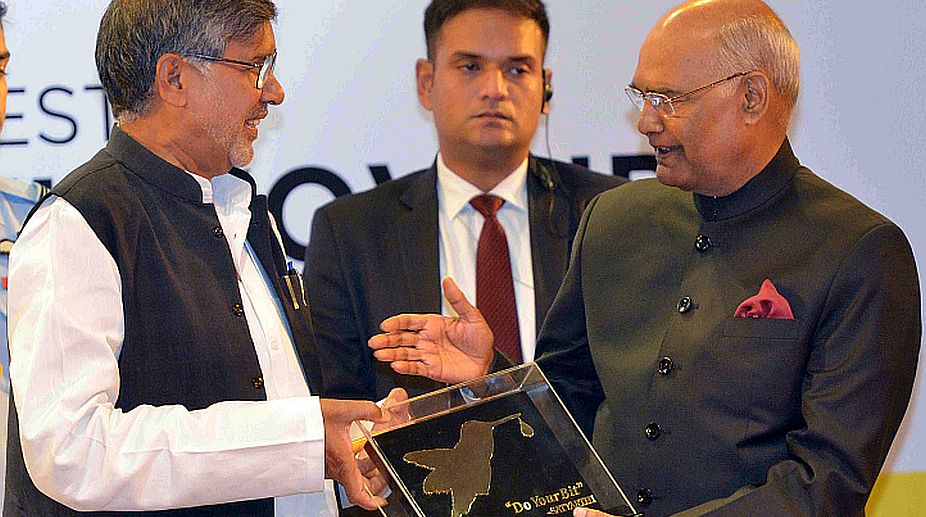Nagaland govt to disallow ‘Gau Mahasabha’ in Kohima
The Nagaland government on Wednesday announced that it would not allow the holding of ‘Gau Mahasabha’ and Gau Dhwaj Sthapana Bharat Yatra in Kohima on September 28.

President of India Ram Nath Kovind with Nobel Laureate Kailash Satyarthi during the closing ceremony of 'Bharat Yatra' at Rashtrapati Bhavan Auditorium in Delhi on Monday. (Photo: SNS)
After covering over 12,000 km in 35 days, Nobel laureate Kailash Satyarthi’s ‘Bharat Yatra’, a movement to spread awareness about child abuse and trafficking, came to an end on Monday at the Rashtrapati Bhavan here.

In this Yatra, Satyarthi garnered support from all sections of the society through 300 marches across the country.
Advertisement
Appreciating the cause taken up by the Nobel laureate, President Ram Nath Kovind said, “It’s an important issue which wasn’t touched so far. The campaign would create a new history and I am of the view these 300 marchers would be the real architect of our nation,” he added.
Advertisement
The President said India is going to celebrate its 75th Independence in 2022 and “I urged Satyarthiji to prepare a roadmap for next five years for its complete eradication.”
Earlier on October 9 in Srinagar, Satyarthi said that injuring a child sends pain throughout humanity. Satyarthi appealed for protection of child rights, particularly their childhood and their education.
“The innocence of children gives us lessons about simplicity of life,” he had said and appealed to all sections of people to protect it.

Starting from the southernmost tip of peninsular India, Kanyakumari, on 11 September 2017, the Bharat Yatra led by Kailash Satyarthi started through seven routes touching cities, towns and villages in 22 Indian states and Union Territories.
During this journey, the volunteers engaged with policy makers, implementers, teachers, local leaders, women’s groups, law enforcement personnel, the media, business leaders, children and their parents.
(With agency inputs)
Advertisement